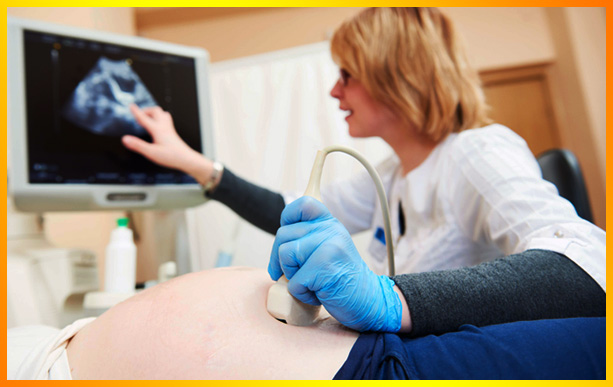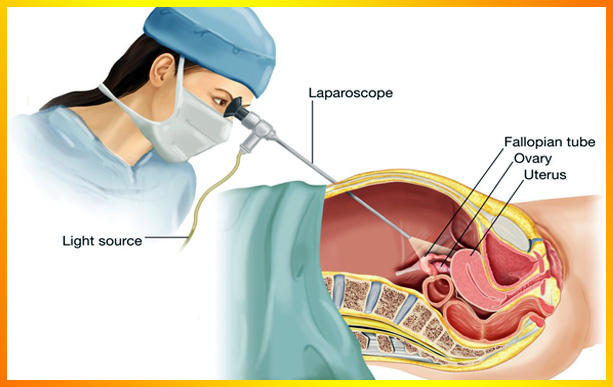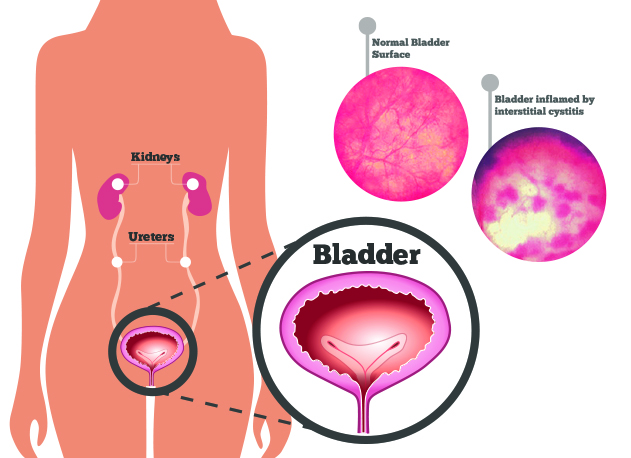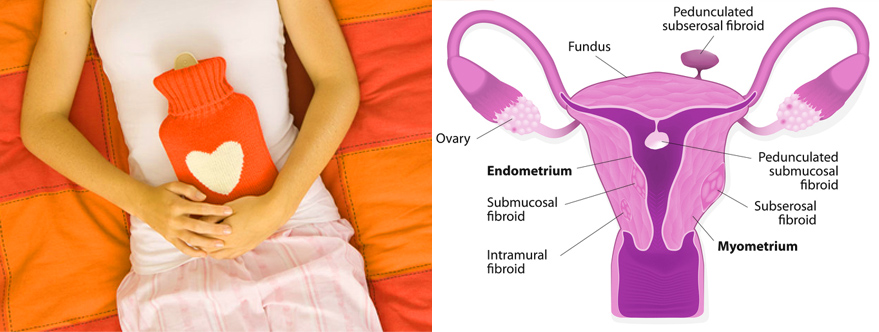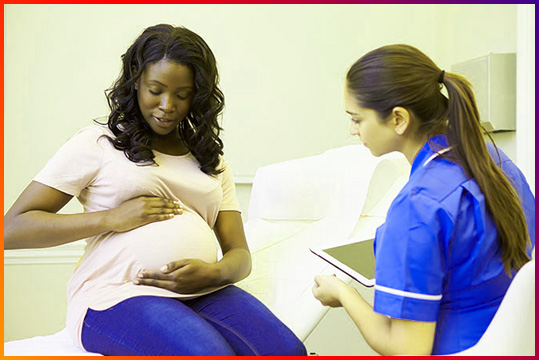Laparoscopy – The gold standard in infertility investigation Now a days, no one has time. Even to make babies ? Infertility is going up!! Unless, there is a proper scientific approach to this problem, the treatment for infertility gets prolonged unnecessarily.
Some times it gets so late that, by the time a laparoscopy is finally done, the surgeon finds that damage to pelvic structures like fallopian tube blocks have became chronic and in-correctable. Of-course the option of IVF is there in such cases. The success rate is low, when the age of the women is advanced , so much that, they may even have to go for egg donation.
In western countries where they follow strict protocols, medicines and injections followed by IUI (intrauterine insemination) is done only for maximum of 3 to 6 cycles . If pregnancy does not occur, diagnostic Hystero- laparoscopy is done to make a proper diagnosis and to correct diseases.
Laparoscopy is a surgical procedure in which a camera is passed through the belly button and the pelvic organs like uterus, tubes and ovaries are seen (magnified ) directly on the screen. This enables the surgeon to make direct diagnosis of diseases of uterus like fibroid and remove it, to find tubal block and correct it, to check ovaries to see if they have PCOS (Polycystic Ovaries) and judge the severity and do drilling procedure. Ovarian drilling helps in opening up of old, unruptured follicles (which have abnormal eggs) helping the ovary to produce fresh eggs and normalize the hormone profile.
The diagnosis of early endometriosis can be made only on laparoscopy and can be corrected by cauterization of lesions. It is found in 40-60% of laparoscopies done in women with infertility, and can be completely missed without laparoscopy.
Laparoscopy is done as a day case, and the patient is able to go home by evening and do all the normal work from next day. It is painless as it is done under GA ( General anaesthesia). Generally 80% of women conceive within 6 months after laparoscopy , if there are no major problems found, which makes it highly cost effective, as most of the other prolonged treatments are expensive.
The main drawback is the lack of training, so the procedure is not widely available. The dexterity, hand eye co –ordinations and fine surgical skills are very important aspects of a laparoscopy surgeon which will affect the outcome.
KEY POINTS
Fibroids could affect fertility Submucous fibroids can cause miscarriage Fibroids (small to medium) may not interfere with growth of the foetus in the womb Fibroids are generally not removed during pregnancy Laparoscopy is a tested option to remove fibroids.
Can fibroids affect fertility?
Fibroids are non-cancerous growth arising from the wall of the womb. They are found in 25-40 per cent of women in the reproductive age group. Studies have shown that different types of fibroids grow in various parts of the womb-wall. Submucous fibroids grow from under the womb-lining while Intramural fibroids are perhaps the most common. They are formed in the middle of the wombwall and Subserous fibroids grow near the outer surface. Fibroids can sometimes cause heavy bleeding, pain in the abdomen, problems related to fertility and cause difficulty in passing urine or stools if the size of the fibroid is big.
How do fibroids cause fertility-related problems?
A small percentage of women with fibroids have problems with their fertility. Fibroids that change the shape of the uterine cavity (submucous) or are within the cavity (intracavitary) decrease fertility by about 70 per cent and removal of these fibroids increases chances of pregnancy. Women with large subserosal fibroids, may compress fallopian tubes thereby blocking the passage of sperm and eggs. Sperm may also be prevented from reaching its intended destination when intramural fibroids are located in the cervical region.
Do all fibroids need removal for fertility?
Fibroids more than 6cms, altering the shape of the uterine cavity and fibroids in the lining of the uterus require removal for increasing the chances of pregnancy. Fibroids have also been linked with a reduction in the success rate of fertility treatments and may require removal to improve the results.
How do you treat patients when fibroids interfere with pregnancy?
Fibroids in the uterine lining can be removed by hysteroscopy which is an endoscope that looks inside the uterine lining. This procedure is called hysteroscopic myomectomy. Fertility chances increase after hysteroscopy. Large fibroids that alter the shape of the womb can be removed by laparoscopy.
If fibroids are present during pregnancy, does it mean that you would need a caesarean section?
Most women with fibroids can deliver normally. Rarely, a fibroid may grow near the cervix during pregnancy. If it is large enough, it may prevent the baby from coming through the birth passage. Multiple fibroids located in the lower part of the uterus can block the birth passage, making it necessary to have a caesarean birth. After laparoscopy, subsequent pregnancy may require caesarean section.
